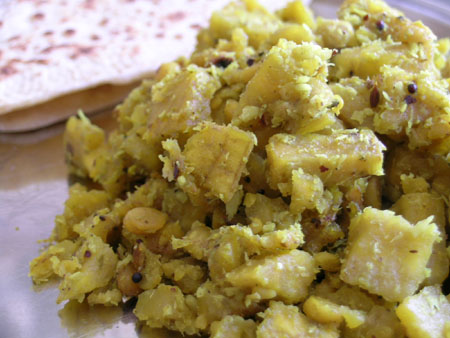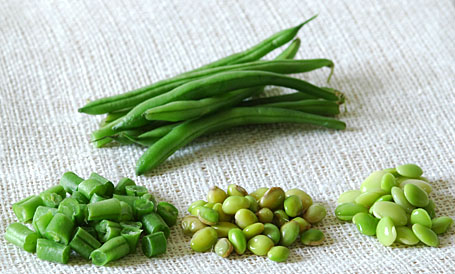
Green Beans, Shelled Indian Beans, Baby Lima Beans
Here in the US, farmers’ markets are usually bursting with fresh green beans during this time of the year. When we first moved here, during my getting to know the US veggies better phase, regular staple in my kitchen was curries and pulaos prepared with frozen green beans. Frozen green beans are cheap, already cut and cook easily. Taste not that good, still I bought them. But after a year of frozen stuff, I had enough and I’ve sworn off green beans entirely. Then, I discovered the farmfresh green beans of springtime and how good they tasted. From then on, along with radishes, beans became a springtime staple at my home.
My recipe here is same as the old classic, the favorite of Indian cookbook authors, where beans are cut into quarter inch length pieces, saut?ed with onions and green chilli-coconut paste. To this basic recipe, I have also added two other types of shelled beans to increase the nutritional value as well as taste. The shelled Indian beans (Papdi Lilva, the middle ones in the photo above) are available in frozen section of Indian grocery shops here, year round and baby lima beans; you could get them from regular grocery shops. They both taste little bit sweet and starchy, compliments the mildly woodsy taste of fresh french beans.
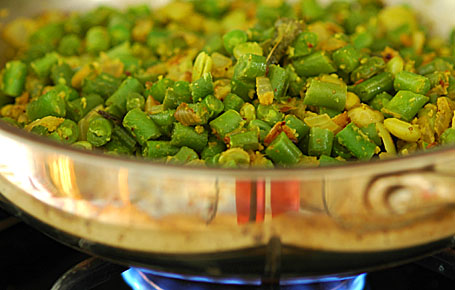
Sauteing the three-bean curry
Recipe:
Fresh Green beans – 2 cups of chopped quarter-inch length pieces
Shelled Indian broad beans – ½ cup
Baby lima beans – ½ cup
Onion – 1, finely chopped
Green chillies- 4 to 6 and coconut powder, a tablespoon – made into smooth paste
Turmeric – ½ teaspoon
Salt to taste
For tadka or tiragamata:
1 tsp of peanut oil
1 tsp of mustard seeds, cumin, minced garlic and few curry leaves
Heat peanut oil in a kadai or a wide pan. Add and toast the tadka ingredients. Add and stir-fry the onions for about 2 minutes. Add the green beans, Indian beans and Lima beans. Cook, covered for about 5 minutes on medium heat. Beans will soften within 5 minutes by cooking in their own moisture, sort of like steam cooking. At this stage, stir in green chilli-coconut paste, salt and turmeric. Cover and cook on medium heat for another 5-10 minutes stirring in between. Serve hot with chapatis or with rice and dal.
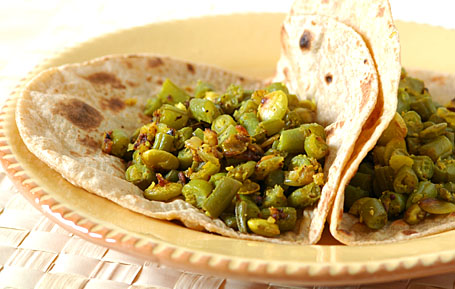
3-bean curry with chapatis
More about Indian Bean Seeds, Papdi Lilva or Chikkudu Vittanalu – Here
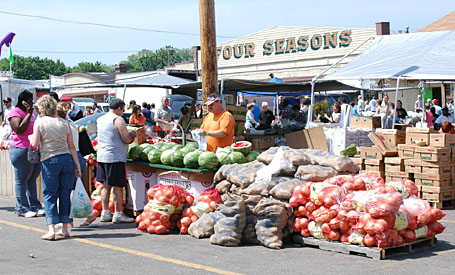
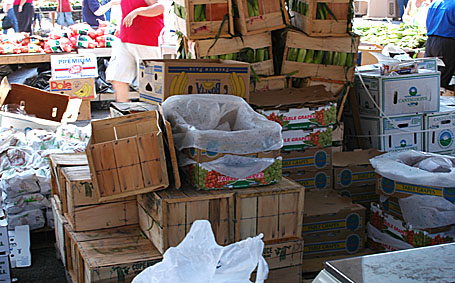
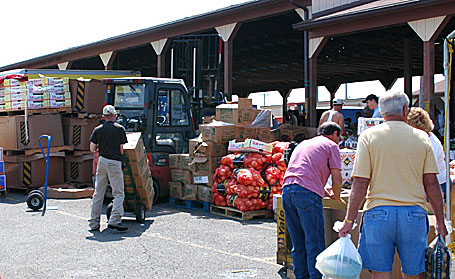

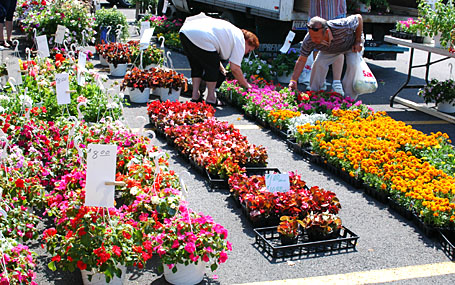
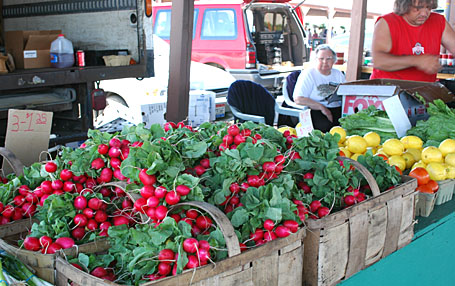
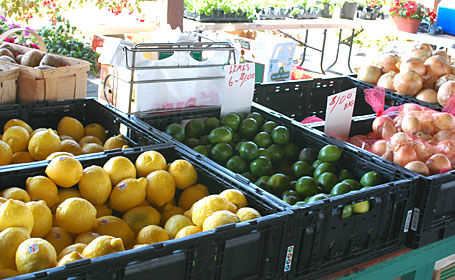
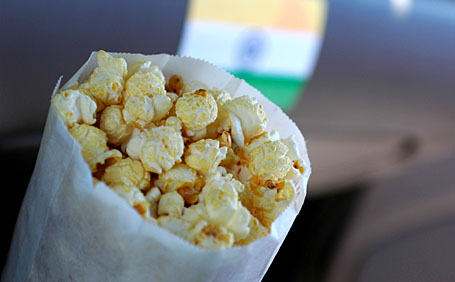
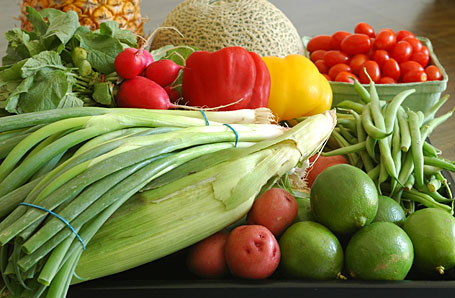
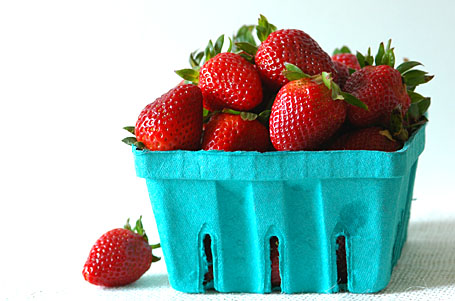
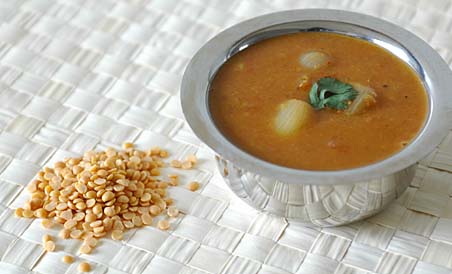
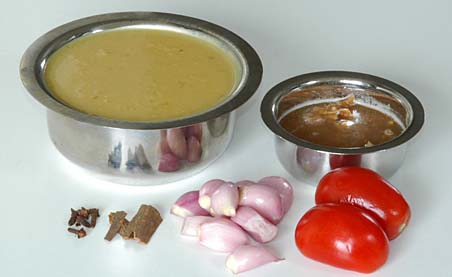
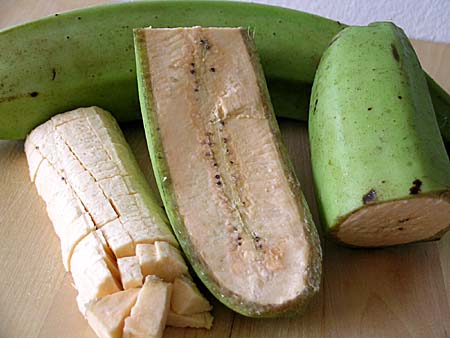
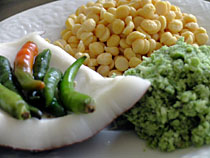 First soak
First soak 